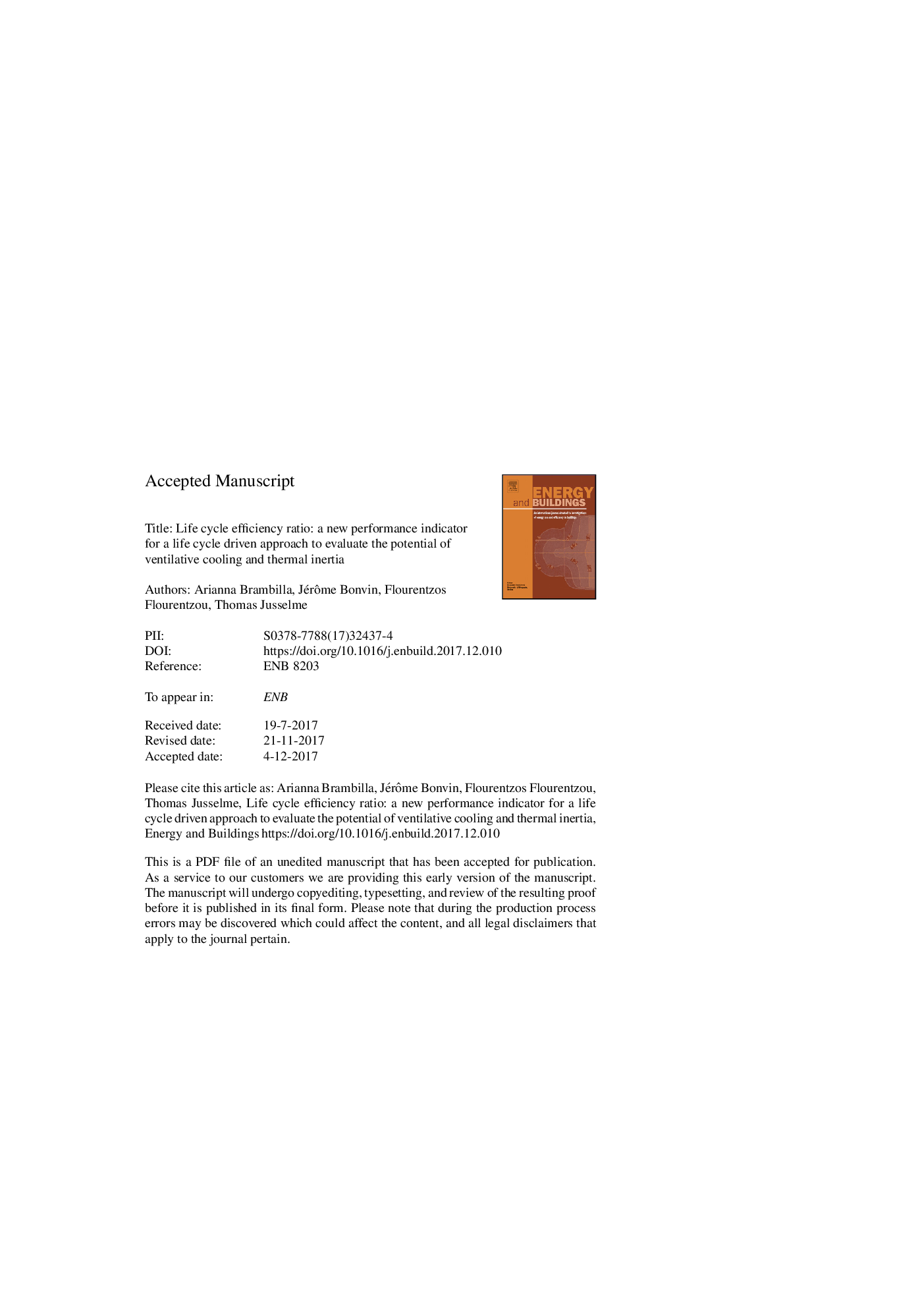| کد مقاله | کد نشریه | سال انتشار | مقاله انگلیسی | نسخه تمام متن |
|---|---|---|---|---|
| 6728851 | 1428927 | 2018 | 29 صفحه PDF | دانلود رایگان |
عنوان انگلیسی مقاله ISI
Life cycle efficiency ratio: A new performance indicator for a life cycle driven approach to evaluate the potential of ventilative cooling and thermal inertia
ترجمه فارسی عنوان
نسبت کارآیی چرخه زندگی: یک شاخص عملکرد جدید برای رویکرد رانده شده به چرخه عمر برای ارزیابی پتانسیل خنک کننده تهویه و آنالیز حرارتی
دانلود مقاله + سفارش ترجمه
دانلود مقاله ISI انگلیسی
رایگان برای ایرانیان
کلمات کلیدی
EPBDCOPGWPCEDSPILCIEVCEmbodied impactsLCA - ارزیابی چرخه حیاتLife Cycle Assessment - ارزیابی چرخه عمر یا چرخه حیاتcumulative energy demand - تقاضای انرژی تجمعیcoefficient of performance - ضریب عملکردEnergy performance of buildings directive - عملکرد انرژی دستورالعمل ساختمانLife Cycle Inventory - موجودی چرخه زندگیglobal warming potential - پتانسیل گرمایش جهانی
موضوعات مرتبط
مهندسی و علوم پایه
مهندسی انرژی
انرژی های تجدید پذیر، توسعه پایدار و محیط زیست
چکیده انگلیسی
Building envelope design has gained importance as a means to reduce heating and cooling demand related to a building's operational phase. However, in high internal load buildings, such as offices, internal gains can easily lead to overheating. Thermal inertia (TI) and night ventilation have a great potential for reducing heat loads and temperature. However, their influence is difficult to predict due to the complex nature of the TI phenomenon, which is related to the interactions of multiple factors such as architecture, building physics and external conditions. Moreover, TI efficacy has often been studied in relation to energy savings or temperature analysis, overlooking other aspects implicated in buildings' efficiency, such as the embodied energy involved. This paper presents a multidimensional approach to evaluate ventilative cooling and thermal inertia as a sustainable strategy to improve building performances. To that end, several scenarios of night ventilation strategies have been applied to the case study of an experimental double-office room placed in Fribourg (Switzerland). Based on this monitoring, a dynamic software simulation tool has been calibrated and used to analyze the energy savings potential and the life-cycle performance of TI. A new ratio index has been introduced to easily evaluate the life cycle efficiency. The results show the importance of balancing operational and embodied impacts when evaluating a design choice. Although high TI levels have great benefits on reducing the cooling loads, the results are completely different when a life cycle assessment is applied. Natural ventilation coupled with middle levels of TI have been identified as the best strategy to optimize the building's energy and environmental performances, without compromising indoor temperatures.
ناشر
Database: Elsevier - ScienceDirect (ساینس دایرکت)
Journal: Energy and Buildings - Volume 163, 15 March 2018, Pages 22-33
Journal: Energy and Buildings - Volume 163, 15 March 2018, Pages 22-33
نویسندگان
Arianna Brambilla, Jérôme Bonvin, Flourentzos Flourentzou, Thomas Jusselme,
